Bodybuilding
Olympic Lifting : 25 Strategies That Work

The Olympics is one of the most excellent sports we have today. The worldwide event originated in Greece centuries ago. It was initially a reserve for the Greeks and has since expanded, and countries hold the event on a rotational basis. Until recently, the Olympics happened annually, but we now have summer and winter Olympics. You're mistaken if you think the Olympics is all about racing. Many events take place, including fitness. The Olympic lifting competition is quite competitive; only the best make it to the top. For this reason, we are equipping you with some of the best strategies to beat your opponents in the Olympics and other bodybuilding contests.
Olympic lifting is not necessarily a sport in the Olympics but a bodybuilding category. It involves snatching the barbell from the floor and lifting it above the head. Here are strategies that should help you to master Olympic lifting.
Must Read:: 30 Gym Slang Terms
Grip Matters In Olympic Lifting
The grip is everything when it comes to Olympic lifts. Make sure to hold the barbell firmly to engage your back. You need to rotate your shoulders as you lift the load to achieve this. A firm grip enhances your stamina and ensures you don't run into unnecessary accidents. As you do the lifting, endure your shoulders at the same level as the hips and legs slightly apart.
Know Your Competitors
You don't necessarily have to compete against someone else regarding Olympic lifts. While most professional bodybuilders compete to beat opponents, some people are there to beat their previous records. The most important thing is to know what you want and work towards achieving your goal.
Stabilize Before Olympic Lifting
As mentioned, stability is of the essence before lowering yourself to lift that barbell. Plant your feet firmly on the floor and make your hands long. Ensure the hips, back, and shoulders are in pretension before going down. Finally, take a deep breath and grip that barbell like a pro.
Essential Read:: All Bodybuilding Categories Explained
Clean and Press
The clean and press technique involves spreading the legs slightly beyond the hips. Assume squatting and use your hips, core, and legs to drive the barbell up. At the same time, you should shrug your shoulders a bit to power the lift.
Distribute Weight Evenly
Lifters who do not achieve the required stability during Olympic lifts have not distributed their weight evenly. The position of the center of gravity plays a vital role when lifting heavy weights. Always ensure it is as low relative to the load level to boost your stability. To achieve this, ensure your core and shoulder are pre-tensioned before the lifting.
Assume the Proper Posture
Posture is crucial for every lift and repetition regarding Olympic lifting. Watch closely the positioning of your chin, back, hands, and legs before, during, and after every ride. Significantly, your toes should go underneath the bar before you lower yourself to lift it.
The Muscle Snatch Technique
Few bodybuilders know about this incredible technique that is handy in Olympic lifting. It involves doing high reps with low weights and vice versa. The method shields the lifter from unnecessary strain, as seen with the power snatch technique.
Bar Positioning
The bar's position is another essential factor you need to consider before going for the lift. It must always be close to the body for obvious reasons. The further away it is from you, the lesser your chances of having a firm, stable grip. Never overlook this rule whenever you're doing Olympic lifting. Proximity to the barbell will also make you have a comfortable reception.
Know Your Snatching Attempts in Olympic Lifting
Depending on the nature of the lifting, the number of snatch attempts should always be those you can handle. While competitive lifting requires you to have as many attempts as possible, personal beating records should not make you overstretch your limits.
Clean High Pull
Another essential technique is the clean high pull, an alternative for pulling a solid front. The technique aims to strengthen your core muscles to make subsequent turnovers simpler.
Watch The Numbers
Check your number and those of your opponents before the competition kicks off. Checking them not only prepares you psychologically but also gives a glimpse of your competitors. Of course, this is only necessary if you're participating in a bodybuilding contest because it is where you gauge their relative strength.
Warm-Up Is Key to Strategic Olympic Lifting
You can do very little to improve strength or muscle during warm-up. However, you could gain a lot more from it than those two. For instance, you are warming up before an Olympic lifting event boosts confidence and sends your adrenaline rushing. The latter should not mean tension but rather being in the perfect mood to unleash the beast within you.
You Need Discipline in Olympic Lifting
Bodybuilding is a highly demanding sport that requires you to have the best discipline. Discipline ranges from avoiding foods and drinks that don't contribute anything positive to your Olympic lifting to keeping time. You don't have to spend valuable time chatting the day away with your buddies. Use that time to make yourself perfect in Olympic lifting.
Check Your Squat Pattern for Olympic Lifting
The book does virtually Olympic lifting. You don't have to invent new techniques because nothing hasn't been tested. For instance, the correct squatting pattern involves making your back straight, reducing inward knee collapse, and having the proper depth.
Muscle Action Timing
Muscles respond differently to the first, second, third, and subsequent pulls. Ensure you adjust accordingly to the muscle reaction to avoid overstretching them. Moreover, underperforming in the initial draws reduces the quality of lifts. Essentially, strive to maintain a balance so you're neither harming your body nor doing below your potential.
Related Article:: Dwayne The Rock Johnson Vs. John Cena Workout Motivation
Boost Your Olympic Lifting Flexibility
A static routine is all you need for strength and stability. The stationary practice should be part of your being fully conversant before the actual lifting.
Outlift the Opposition
The Olympic lifting is all about who lifts the most weight. Always ensure you're ahead of your opponent or training partner by a kilogram or less. That way, you will teach a competitive culture to help you fare well in any bodybuilding competition. Importantly, choose your poundage wisely to ensure you have a competitive edge.
Lower the Barbell Actively
Lifters don't do as much work while lowering the weights as lifting them. But did you know that reducing the barbell is an active movement that involves every muscle in your body? Furthermore, active lowering is a factor judges consider in bodybuilding competitions.
Train Hard for Olympic Lifting
There is no better strategy for professional lifting than consistent training. You can't learn everything through observation or reading about it. Get up every day and, take yourself to the gym, do the actual lifting using the correct procedure. Only that way will you master it to perfection.
Don't Waste Time on Top of the Pull
Every second wasted on top of the pull is a point taken off your record. There's not much strain when the bar is down, but the same cannot be said when it is above your shoulders. Therefore, always act on the barbell when you're in a perfect position.
Keep Your Shoulders Back
It is the best way to keep your core straight when lifting. Notably, the s rugged, laid-back shoulders will reduce the strain on the muscles in the lower part of the body.
Do More Strength Training for Olympic Lifting
Strength training is the ultimate secret to all-all-around Olympic lifts. Boost your strength as much as possible before standing before that barbell. Use the right equipment, diet, and supplementation to perform Olympic lifting.
Join Lifting Classes
It is rewarding when you do everything like a professional. Instead of trying to learn everything in the streets, why not find yourself a good coach or personal trainer for the same? A good lifting course will cover general physical preparedness, flexibility, mobility, techniques, and more.
The Barbell Is Not Everything in Olympic Lifting
The COVID-19 pandemic has taught us to improvise when things get thick. You can still rain for Olympic lifting even without the barbell. Work on technique and power through maximum strength, peak power, velocity, and speed.
Overall
Olympic lifting is an integral part of bodybuilding. Every bodybuilder can't run away from it. It is also one of the most technical aspects of the sport. We hope the strategies we have shared will go a long way in preparing you to be one of the best Olympic lifters. Our shop and blog are full of goodies for all your bodybuilding needs. Please feel free to explore.
Also Read:: 5 Best Bodybuilding Forums
Bodybuilding
Mastering Bodybuilding in 2025: Top Fitness Tips for Success

Bodybuilding is more than just a sport; it's a lifestyle that requires dedication, discipline, and a thorough understanding of fitness principles. As the world of fitness continues to evolve, bodybuilders must stay updated with the latest trends, techniques, and scientific advancements to achieve their goals. In 2025, several innovative approaches are redefining bodybuilding. Here are essential fitness tips for bodybuilders to excel this year.
Read More: Bodybuilder Winter Clothing: Staying Warm and Stylish
Embrace Technology-Driven Workouts
In 2025, technology plays a significant role in bodybuilding. Wearable devices, fitness apps, and virtual reality (VR) training are now integral components of an effective workout regimen.
Wearable Devices
Modern wearables track everything from heart rate and sleep patterns to muscle activation and caloric expenditure. Utilize these devices to monitor your progress and make data-driven adjustments to your training and nutrition plans.
Fitness Apps
Leverage fitness apps for customized workout plans, progress tracking, and virtual coaching. Many apps now incorporate artificial intelligence to provide personalized feedback and recommendations.
Virtual Reality Training
VR technology offers immersive workout experiences, allowing bodybuilders to simulate different training environments and scenarios. This can enhance motivation and add variety to your routine.
Focus on Functional Strength
While hypertrophy (muscle growth) remains a primary goal, functional strength is gaining importance. Functional strength training improves overall performance, reduces the risk of injury, and enhances daily activities.
 Check Out Our1 4 Weeks Quality Strength & Lean Muscles
Check Out Our1 4 Weeks Quality Strength & Lean Muscles
Compound Movements
Incorporate compound exercises like squats, deadlifts, and bench presses. These movements engage multiple muscle groups and joints, promoting balanced strength development.
Core Stability
Prioritize exercises that strengthen the core, such as planks, Russian twists, and leg raises. A strong core supports better lifting mechanics and reduces the risk of lower back injuries.
Optimize Nutrition for Muscle Growth and Recovery
Nutrition is the cornerstone of successful bodybuilding. In 2025, the focus is on personalized nutrition plans tailored to individual needs and goals.
Protein Intake
Ensure adequate protein intake to support muscle repair and growth. Aim for 1.6 to 2.2 grams of protein per kilogram of body weight per day, depending on your training intensity and goals.
 Click Here to Buy SynthaTrope By SynthaPharma
Click Here to Buy SynthaTrope By SynthaPharma
Nutrient Timing
Pay attention to nutrient timing to maximize muscle recovery and growth. Consume protein and carbohydrates within 30 minutes post-workout to replenish glycogen stores and kickstart muscle repair.
Supplements
Utilize supplements wisely. Creatine, branched-chain amino acids (BCAAs), and omega-3 fatty acids are popular choices for enhancing performance and recovery.
Prioritize Mental Health and Mindfulness
Mental health is increasingly recognized as a critical component of overall fitness. Incorporating mindfulness practices can improve focus, reduce stress, and enhance performance.
Meditation
Incorporate meditation into your daily routine to reduce stress and improve mental clarity. Mindfulness meditation can enhance your mind-muscle connection during workouts.
Visualization
Use visualization techniques to mentally rehearse your workouts. Visualizing successful lifts and achieving your goals can boost confidence and motivation.
Rest and Recovery
Prioritize rest and recovery to prevent burnout and overtraining. Ensure you get 7-9 hours of sleep per night and incorporate rest days into your training schedule.
Leverage Advanced Training Techniques
Advanced training techniques can help break through plateaus and stimulate muscle growth. In 2025, several methods are gaining popularity among bodybuilders.
Blood Flow Restriction (BFR) Training: BFR involves restricting blood flow to the muscles during low-intensity exercises. This technique can enhance muscle growth and strength without the need for heavy weights.
Eccentric Training: Focus on the eccentric (lowering) phase of exercises. Eccentric training can stimulate greater muscle damage and growth compared to traditional concentric movements.
Periodization: Implement periodization into your training plan. Varying the intensity, volume, and type of exercises can prevent plateaus and ensure continuous progress.
Incorporate Recovery and Mobility Work
Recovery and mobility are essential for preventing injuries and maintaining optimal performance. In 2025, bodybuilders are paying more attention to these aspects of training.
Foam Rolling and Myofascial Release: Use foam rollers and massage balls to release muscle tightness and improve flexibility. Regular myofascial release can reduce soreness and enhance recovery.
Stretching: Incorporate dynamic stretching before workouts and static stretching after workouts. Stretching improves range of motion and prevents muscle imbalances.
Cryotherapy and Hydrotherapy: Explore recovery techniques like cryotherapy (cold therapy) and hydrotherapy (water therapy) to reduce inflammation and accelerate muscle recovery.
Engage in Continuous Learning and Community Building
The fitness industry is constantly evolving, and staying informed is crucial for success. Engage in continuous learning and connect with the bodybuilding community for support and motivation.
Educational Resources: Read books, watch videos, and attend seminars to stay updated on the latest research and trends in bodybuilding.
Community Engagement: Join online forums, social media groups, and local bodybuilding clubs. Sharing experiences and knowledge with fellow bodybuilders can provide valuable insights and encouragement.
Professional Guidance: Consider working with a certified personal trainer or coach. Professional guidance can help you optimize your training and nutrition plans, ensuring you're on the right track.
With your FB Plus subscription or active FB Plus Pass, you now have access to 124 weeks of our most popular workout programs, which typically sell for $10-$30 each. Additionally, our popular 4-week Meal Plan is included. This is on top of the 38 Challenges and Programs that are already available to Plus members.
We've also introduced a new feature that many of you have requested. To assist you in choosing your next program, you can now preview each day of any program from its detail view. This feature lets you see all the included workout videos and content before you schedule it, ensuring you know exactly what to expect.
Conclusion
In 2025, bodybuilding is more than just lifting weights; it's a holistic approach to fitness that encompasses technology, nutrition, mental health, and advanced training techniques. By embracing these fitness tips, bodybuilders can achieve their goals, stay injury-free, and enjoy a fulfilling fitness journey. Remember, consistency and dedication are key to success in bodybuilding. Stay committed, keep learning, and most importantly, have fun on your path to becoming the best version of yourself.
Bodybuilding
Top Video Games for Bodybuilders in 2025

There are several video games that can be great for bodybuilders, combining fitness and fun! Here are some of the best options:
Ring Fit Adventure (Nintendo Switch)
The game uses the Ring-Con and Leg Strap to guide you through various exercises and adventures. It's a fun way to get a full-body workout while playing a game.
Fitness Boxing 2: VR Boxing Remastered (PlayStation VR)
It offers a full-body boxing workout with a variety of punches and combos. It's a great way to improve your fitness while enjoying a virtual boxing experience.
Must Read: Marvel-Inspired Training Clothing on Amazon
Just Dance 2024
This popular dance game gets you moving to the beat with a variety of songs and dance routines. It's a fun way to burn calories and improve your coordination.
Zumba Fitness
Burn It Off (Nintendo Wii): This game offers a fun and energetic Zumba workout, perfect for those who enjoy dancing and want to get a good cardio workout.
Yoga for Beginners
If you're looking for a more relaxing workout, yoga games can help improve flexibility and reduce stress. Many of these games offer guided yoga sessions that you can follow along with.
Gym Tycoon
This game lets you build and manage your own gym, complete with various workout equipment and fitness classes. It's a great way to learn about different exercises and how to create effective workout routines.
The Sims 4: Fitness Stuff Pack
This expansion pack for The Sims 4 adds fitness equipment and activities to the game, allowing you to improve your character's fitness and join the athlete career.
Grand Theft Auto: San Andreas
While not a traditional fitness game, this classic game includes bodybuilding activities that can help your character gain muscle and improve fitness.
Knockout Home Fitness (Nintendo Switch)
This game offers a variety of boxing workouts that can help improve your strength and endurance.
Gym Simulator 24 (PC)
In this simulation game, you can build and manage your own fitness empire, creating workout routines and managing gym equipment.
Let's Get Fit (Nintendo Switch)
This game focuses on pure workouts, allowing you to set programs and follow along with digital trainers for a customized fitness experience.
Beat Saber (VR)
A popular VR game where you slash blocks to the beat of the music, providing an intense full-body workout.
Synth Riders (PlayStation VR)
This game combines freestyle dance and fitness, offering high-tempo tracks and multiplayer modes for a fun and energetic workout.
Yoga Master (PlayStation)
Designed by professional yoga coaches, this game offers a variety of yoga lessons and poses to improve flexibility and reduce stress.
Les Mills Bodycombat (PlayStation VR)
A martial arts-inspired workout game with a range of workout plans and coaching to keep you motivated.
OhShape Ultimate (PlayStation VR)
This game provides a full-body cardio workout with six sessions and two difficulty levels, designed to engage every part of your body.
These games offer a mix of cardio, strength, and flexibility workouts, making them great additions to your fitness routine.
Related Article: Supplemental Breast Milk for Bodybuilders
Bodybuilding
2nd Edition of Natural Bodybuilding Competition Facts
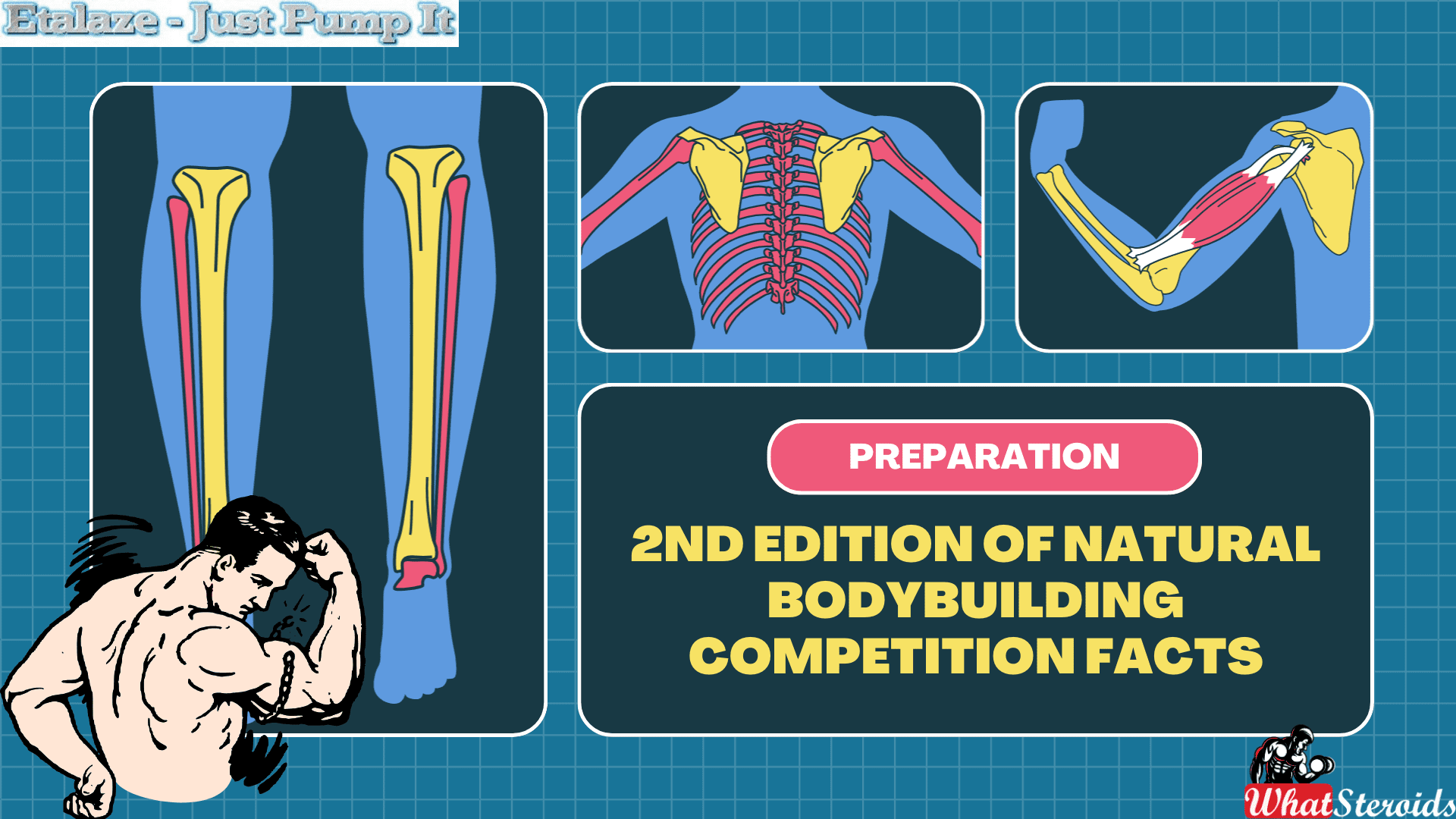
Natural bodybuilding competitions are designed to promote and celebrate athletes who build their physiques without the use of performance-enhancing drugs. These events emphasize fair play, health, and the natural development of muscle mass and definition.
The second edition of natural bodybuilding competitions has gained momentum globally, particularly focusing on drug-free athletes. These competitions are hosted by various organizations like the INBA/PNBA (International Natural Bodybuilding Association/Professional Natural Bodybuilding Association) and OCB (Organization of Competitive Bodybuilders).
In 2024, several notable events have been planned, including the INBA Natural Universe and INBA World Cup, both of which emphasize natural bodybuilding through rigorous drug testing policies. These events aim to showcase competitors who adhere to strict drug-free protocols, and winners often earn pro cards allowing them to compete in higher-level professional competitions.
These competitions focus on categories like men's bodybuilding, classic physique, and women's figure and bikini, among others. Athletes undergo polygraph and urine tests to ensure compliance with natural bodybuilding standards. The winners often receive medals, trophies, or pro status
-

 Steroids2 years ago
Steroids2 years agoVOX Testing: Why Bodybuilders Must Have It Tested Regularly
-

 Steroids2 years ago
Steroids2 years agoShavers and Other Body Grooming Equipment for Bodybuilders In 2023
-

 Steroids2 years ago
Steroids2 years agoChatGPT and Other Avenues to Find Great Bodybuilding Coaches
-

 Steroids2 years ago
Steroids2 years agoBest Oil Recommendations Before Competition for Subtle Shimmer
-

 Steroids2 years ago
Steroids2 years agoPowerlifting Vs Power Building: Find Out the Big Difference and When to Shift Between the Two
-

 Anabolic Steroids1 year ago
Anabolic Steroids1 year agoLegality of Anabolic Steroids In Latin America
-

 Nutrition1 year ago
Nutrition1 year agoEverything Nutritional Food: What’s Too Much Or Too Little
-

 Bodybuilding Products12 months ago
Bodybuilding Products12 months agoTelmisartan In Bodybuilding: An Expert’s Advice
-

 Beginners2 years ago
Beginners2 years agoTren Cycle for Beginners
-

 Bodybuilding1 year ago
Bodybuilding1 year agoList of FDA-Approved Peptides
-

 Bodybuilding2 years ago
Bodybuilding2 years agoCompetition Prep Cycle for Pro Bodybuilders
-

 Anabolic Steroids11 months ago
Anabolic Steroids11 months agoHow Much Do You Know About B-AET? A Fat Burner You’ve Been Missing
-

 Bodybuilding1 year ago
Bodybuilding1 year agoChia Seeds in A Bodybuilder’s Diet: An Expert’s Advice
-

 Steroids11 months ago
Steroids11 months agoAnadrol Cycle: Benefits, Doses, Alternatives, etc.
-

 Bodybuilding7 months ago
Bodybuilding7 months agoPrimal Movements: Our Ultimate Guide for Maximum Results
-

 Anabolic Steroids8 months ago
Anabolic Steroids8 months agoJoint Stiffness: How to Manage It While on AAS
-

 Product Reviews10 months ago
Product Reviews10 months agoTop Vitamins for Skin Health
-

 Steroids9 months ago
Steroids9 months agoOmnitope (Oxytocin)
-

 Bodybuilding1 year ago
Bodybuilding1 year agoHow Much Is Too Much Cardio? Understanding Heart Rate Zones
-

 Steroids10 months ago
Steroids10 months agoMajor Bodybuilding Peptides Explained
-

 Bodybuilding8 months ago
Bodybuilding8 months agoHow Effective is Bone Broth for Recovery?
-

 Bodybuilding9 months ago
Bodybuilding9 months agoHormone Replacement Therapy (TRT) Cycle Guide
-

 Anabolic Steroids1 year ago
Anabolic Steroids1 year agoStart The New Year Strong With These Tips
-

 Bodybuilding10 months ago
Bodybuilding10 months agoHere Is How To know Your MRV (Maximum Recoverable Volume)
-

 Steroids1 year ago
Steroids1 year agoTrenbolone: Why it Remains A Beast In the Market

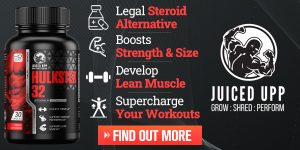
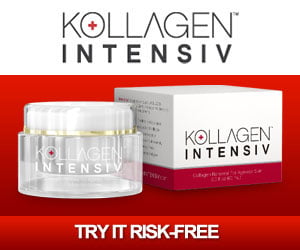
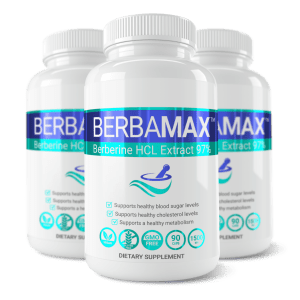
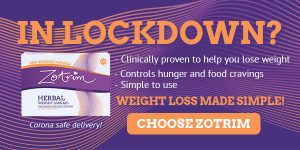

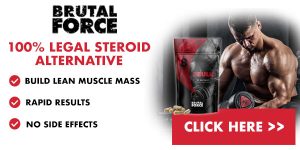




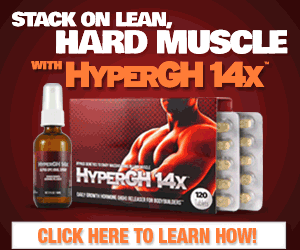
 Click here to buy 1-Test Cyp/DHB 100 by Dragon Pharma
Click here to buy 1-Test Cyp/DHB 100 by Dragon Pharma









